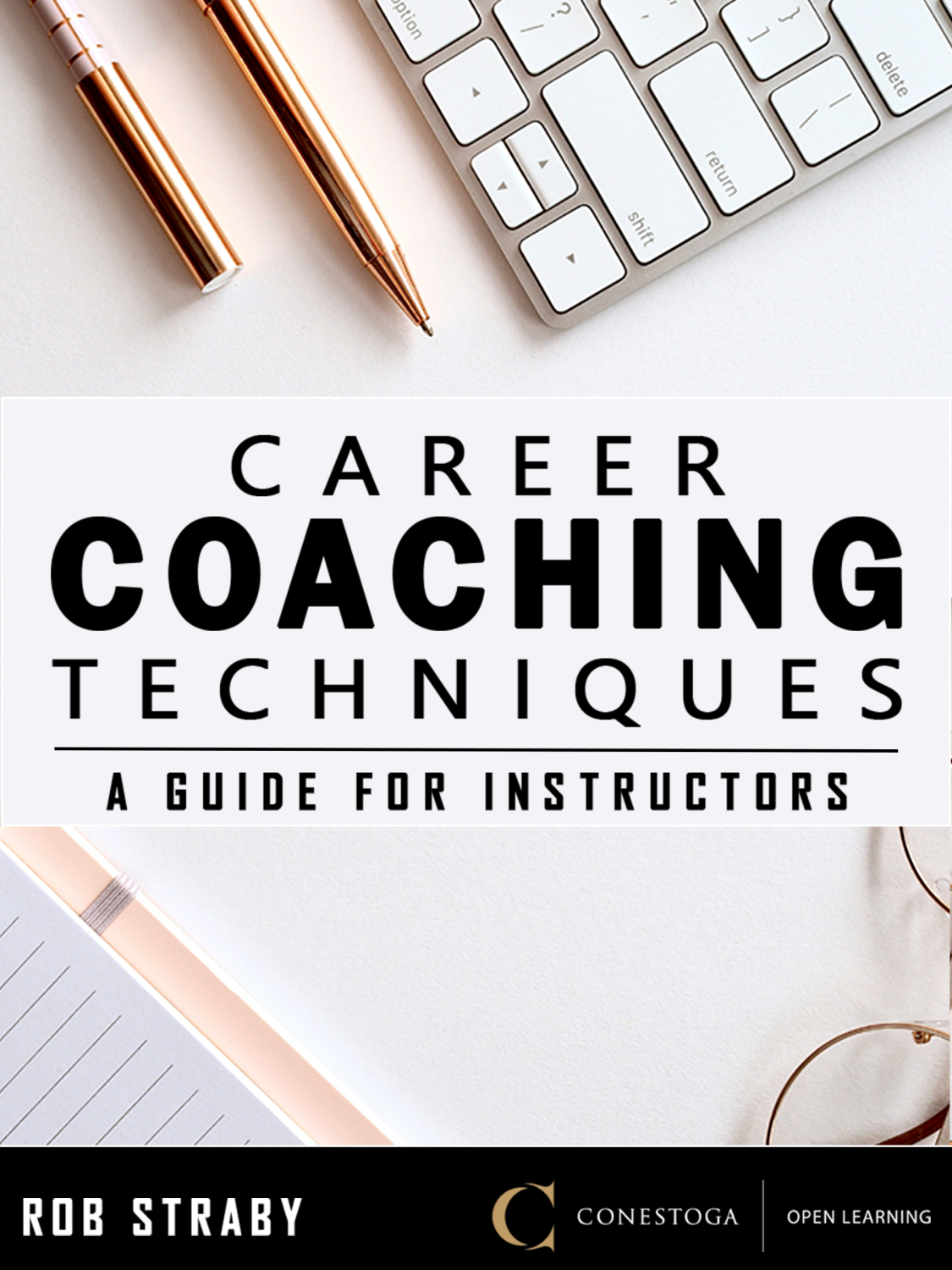Book Title: Career Coaching Techniques: A Guide for Instructors

Download this book
Book Description: This OER is a guide for instructors who teach career coaching and counselling courses. It takes the reader through various steps in the career coaching process, from initiating the relationship with the client to helping them explore career options. It ends with a chapter on decision-making where the client has chosen a potential career pathway. The OER presents the theories of respected academics and models the techniques used by many well-known career professionals, including the life role analysis model, also known as the Self-Portrait model, by Kris Magnusson and Dave Redekopp. It also presents activities like the vocational card sort activity that the instructor can use in class with their students. The author has the unique perspective of being a practitioner who has helped thousands of Canadians navigate career transitions, as well as an instructor of career coaching and counselling. Career Coaching Techniques is full of anecdotes from the author’s career development practice and experience as a teacher.
Contents
Book Information
Book Description
Helping others navigate the multifaceted world of career development requires more than just a strategic mind; it demands empathy, resilience, and an in-depth understanding of the psychological and emotional landscapes that individuals traverse during career transitions. This book is designed to provide instructors who teach career coaching with the tools, insights, and frameworks needed to support their students in their journey toward fulfilling and sustainable careers as career professionals.
In my own career, I struggled early on to bring the skills, knowledge and applications of my work together. I was fortunate enough to learn from Dave Redekopp and Kris Magnussen. Their work helped me integrate everything I had learned into a coherent whole. Over the years, I have applied their work in my career practice with individuals. This has led to multiple innovations in their original work. I have also used their work to teach career development professionals. However, I reached the point where I needed to create material that integrated their original work with experience gleaned from decades of client practice, which is why I decided to write this book.
In Chapter 1, we delve into the story of Haven, whose unexpected career upheaval is a poignant example of the transformative power of empathetic and strategic career support. This chapter emphasizes the significance of storytelling, the application of micro-skills, and the adoption of a trauma-informed approach. Through these foundational elements, career professionals can better support individuals in navigating career challenges, fostering resilience, and achieving meaningful professional growth.
Chapter 2 focuses on the importance of developing an empathetic relationship with clients. Understanding the client’s perspective on their current situation is crucial in helping them determine the changes they want to make. This chapter provides techniques for creating actionable plans that clients can commit to, ensuring they are equipped to bring about the desired changes they seek in their careers.
Chapter 3 explores the intricate process of career exploration and change. This chapter offers an overview of quantitative and qualitative assessment methods, emphasizing the importance of a multifaceted approach to career exploration. Through these processes, clients can gain deeper insights into their strengths, interests, and values, ultimately guiding individuals toward informed career decisions.
Chapter 4 introduces the concept of Self-Portraits in career exploration, offering a unique and holistic approach to understanding one’s career aspirations and goals. By guiding clients through the creation of Self-Portraits, career professionals can help them articulate their career narratives and envision their future paths with greater clarity.
Chapter 5 addresses the complexities of preparing for a career journey. This chapter provides a structured approach to goal specification, emphasizing the importance of setting goals and breaking down long-term objectives into manageable steps. Practical learning experiences, such as internships and volunteer work, are highlighted as essential components of career development, enhancing both skills and confidence.
Finally, Chapter 6 tackles the often-daunting task of career decision-making. This chapter explores various decision-making theories and models, offering practical advice on helping clients make informed and personalized career choices. Understanding the principles of decision-making and recognizing the factors influencing career choices enable career coaches to guide their clients with greater confidence and clarity.
As you embark on this journey through the pages of this book, I hope you find the insights and strategies presented here both enlightening and empowering. Whether you are a seasoned career professional or new to the field, this book aims to equip you with the knowledge and skills necessary to make a profound and positive impact on your clients’ lives. To those who teach this course, I hope you find my experiences and approaches helpful in your classroom.
License
Career Coaching Techniques: A Guide for Instructors Copyright © 2024 by Rob Straby is licensed under a Creative Commons Attribution-NonCommercial-ShareAlike 4.0 International License, except where otherwise noted.
Subject
Society and Social Sciences

